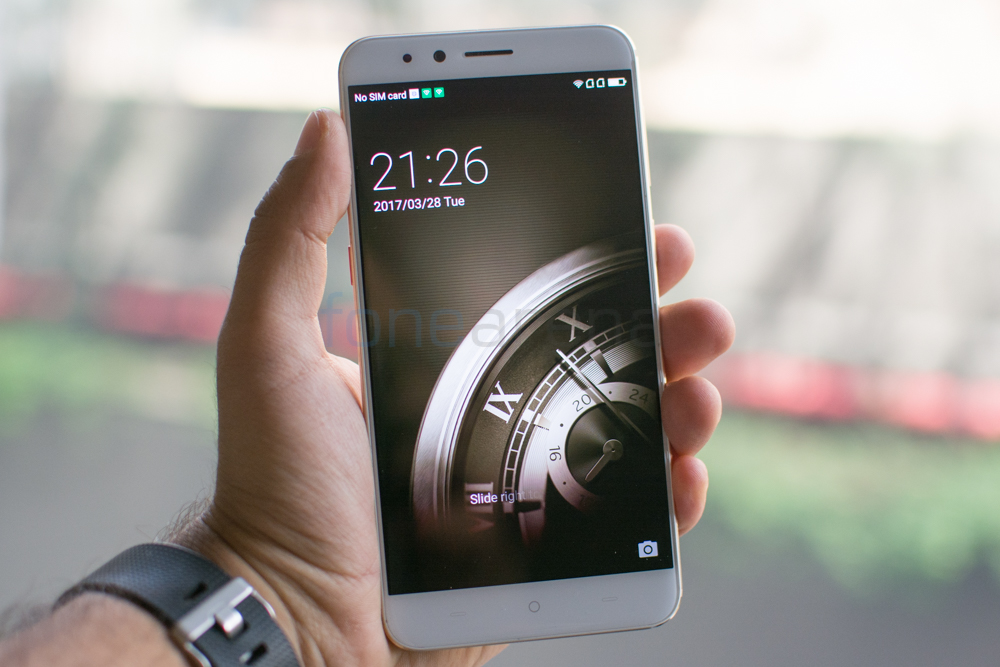
Launched at an event in Delhi, the Micromax Dual 5 marks the return of the brand from what appeared to be a rather long slumber. The Micromax Dual 5 represents a refreshed focus for the company that seems to now have its sights sets on the higher end mid-range segment. Having spent a bit of time with the device, here’s what we think about it.
Micromax Dual 5 specifications
- 5.5-inch (1920 x 1080 pixels) Full HD AMOLED display with 100% NTSC color gamut, Corning Gorilla Glass 3 protection
- Octa-Core Snapdragon 652 processor (Quad 1.8GHz ARM Cortex A72 + Quad 1.2GHz A53 CPUs) with Adreno 510 GPU
- 4GB LPDDR3 RAM, 128GB internal storage, expandable memory with microSD
- Android 6.0 (Marshmallow)
- Hybrid Dual SIM (nano + nano / micro)
- 13MP (monochrome) + 13MP (RGB) rear camera with dual-tone LED flash, f/1.8 aperture, Sony sensors, 4K video recording
- 13MP front camera with f/2.0 aperture, 1.12μm pixel size, soft selfie flash, Sony sensor
- 3.5mm audio jack, FM Radio
- Fingerprint sensor Infrared sensor
- 4G VoLTE, WiFi 802.11 ac (2.4/5 GHz),Bluetooth 4.2, GPS, USB Type C
- 3200mAh battery with Quick Charge 3.0
Hardware
In our conversation with Rahul Sharma, CEO Micromax, the one topic that we always hearkened back to hardware diversification and the challenges around it. This is reflected in the fact that from the front, the Dual 5 looks like a generic Android device with not much in terms of a design ID to separate it from the throngs of other phones released each quarter.
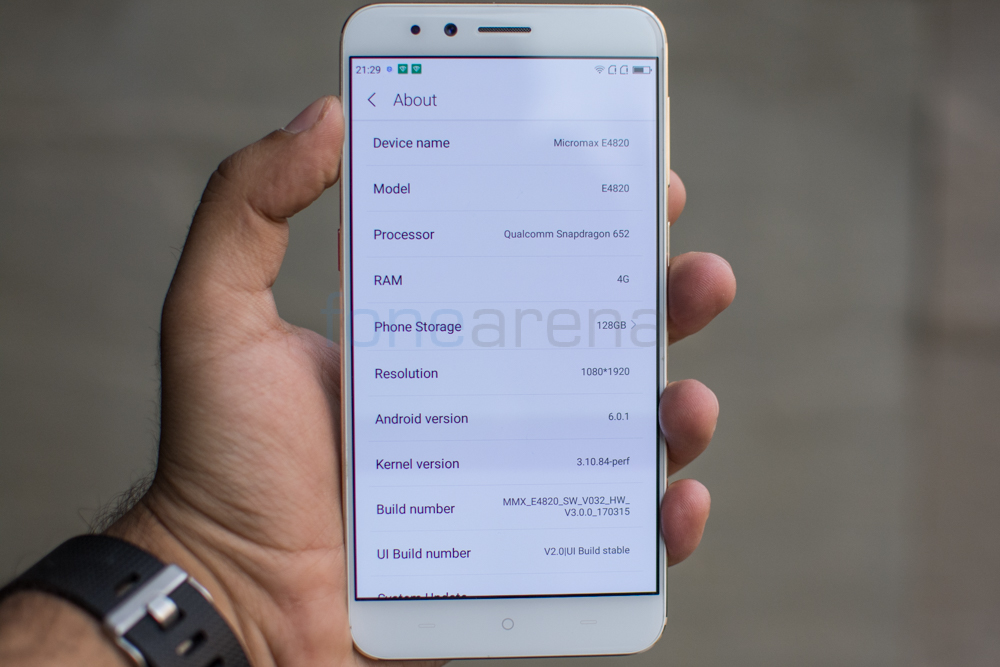
You’ll observe a 5.5 inch Full HD AMOLED display that looks stunning as you’d expect. The company repeatedly emphasised the narrow bezels on either side and this is true though not entirely unique to Micromax. Still, the phone does feel smaller than you’d expect with the large display feels good in the hand. Below the screen lie three capacitive keys while up above is a 13MP camera and accompanying LED flash.
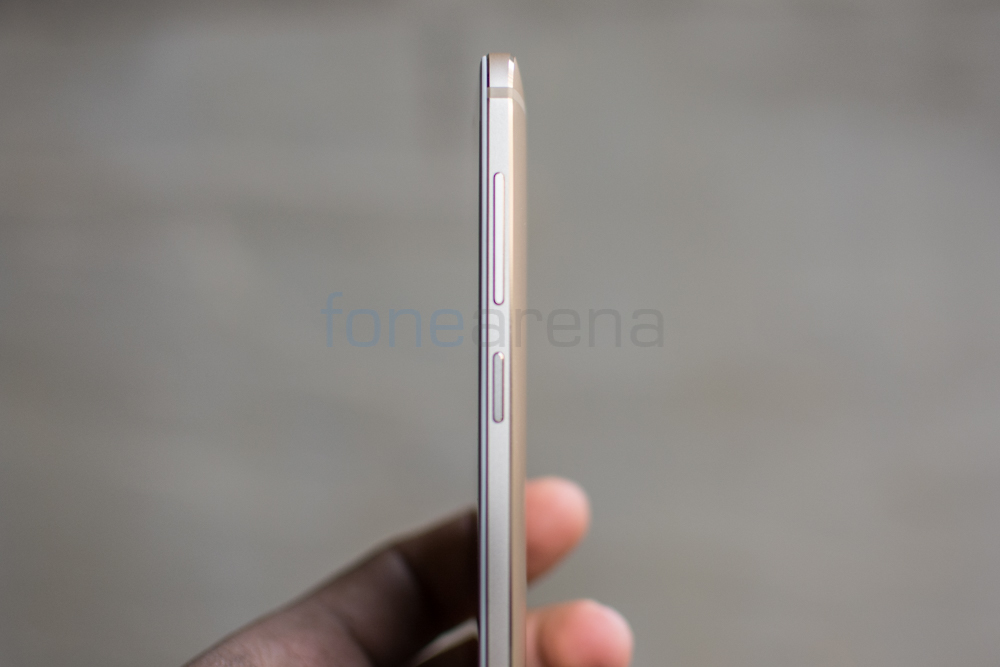
Coming to the right hand side of the phone, you’ll notice the volume rocker and power button. Like the rest of the body, these buttons too are made of metal. Unfortunately the volume key doesn’t have much travel and feels very mushy on pressing down. On the other hand, the power button is quite reassuring. A built-in software function ensures that the power key doubles up as the government mandated panic key and lets you dial an emergency number hotline by pressing down three times.
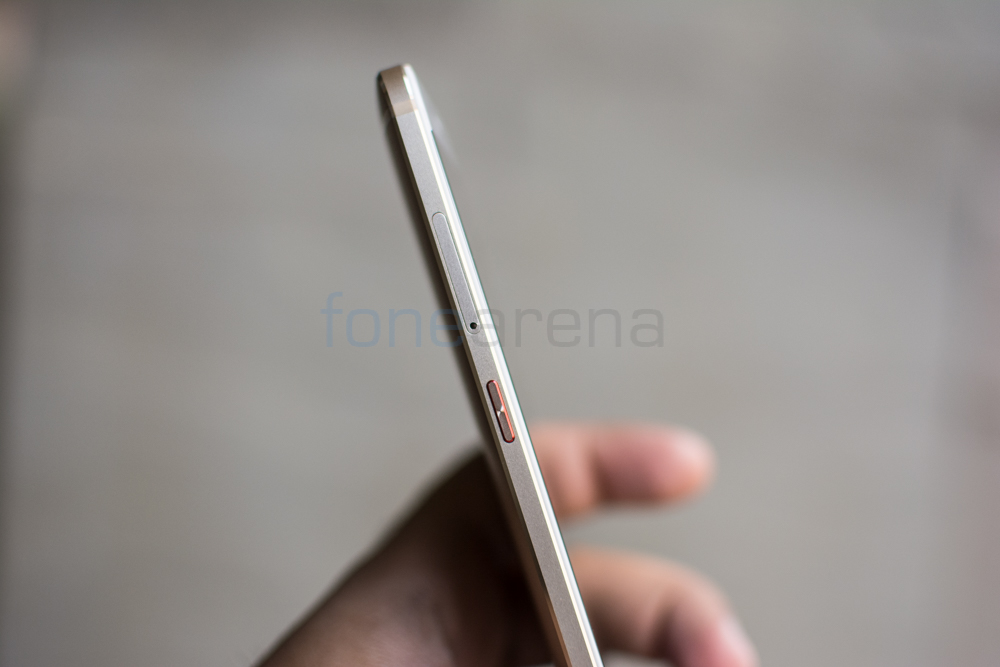 Notice something interesting on the left hand side? Yes, there’s an additional button here. The Micromax Dual 5 is equipped with a dedicated programmable shortcut key that you can set for almost any function on the device. A very nifty addition indeed. Above it lies the Hybrid SIM slot, something we have mixed feelings about, but the built-in 128GB of memory helps assuage some of our fears. The bottom edge has a USB Type C connector while up top lies the 3.5mm audio jack and IR blaster.
Notice something interesting on the left hand side? Yes, there’s an additional button here. The Micromax Dual 5 is equipped with a dedicated programmable shortcut key that you can set for almost any function on the device. A very nifty addition indeed. Above it lies the Hybrid SIM slot, something we have mixed feelings about, but the built-in 128GB of memory helps assuage some of our fears. The bottom edge has a USB Type C connector while up top lies the 3.5mm audio jack and IR blaster.
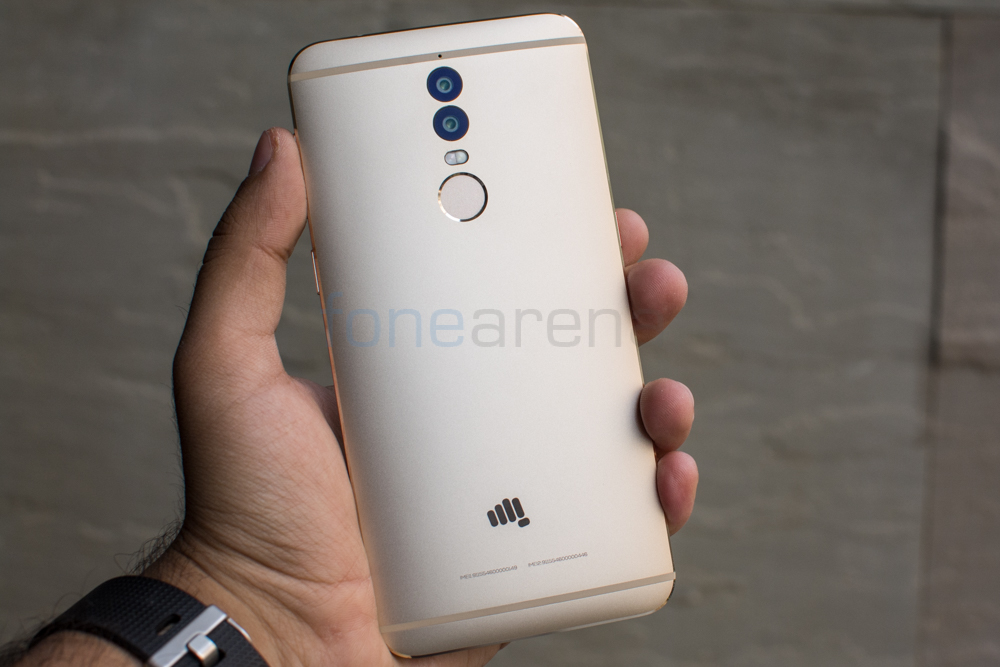
Finally, at the back of the device you’ll notice the dual camera modules that make the device special. Both of the modules here have 13MP Sony sensors with one of them being a monochrome sensor that combines the image obtained from the other RGB sensor. The phone can use the two sensors in tandem to create a bokeh effect and generally improve image quality. Below it lies the dual LED flash as well as fingerprint sensor. Antenna bands can be seen running along the top and bottom of the device.
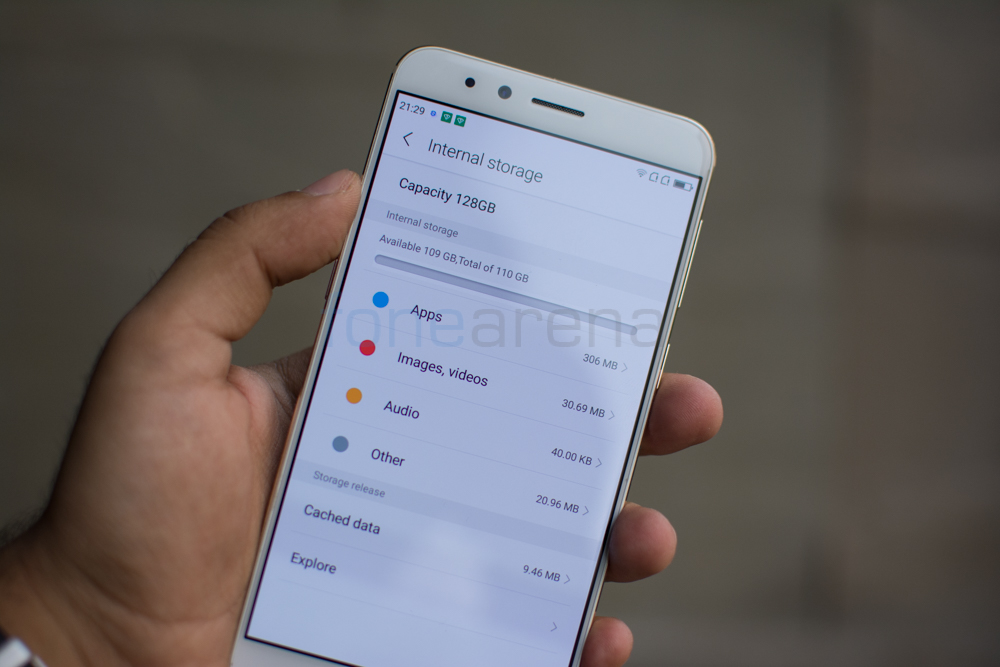
Internally, the Micromax Dual 5 is running a Snapdragon 652 paired with 4GB of RAM. While not top of the line, the hardware platform is a solid bet that in our experience delivers a great balance between performance and battery longevity. While it’s too early to give a verdict but in our brief impressions, the phone performed adequately well though the onboard skin is something that you’ll have to contend with. Interestingly, parallels have been drawn between the Micromax Dual 5 and a recently launched model by Qiku and it looks like the similarities extend further than the hardware. The Dual 5 has software features like an app freezer, something we’ve seen previously on the Qiku Q Terra.
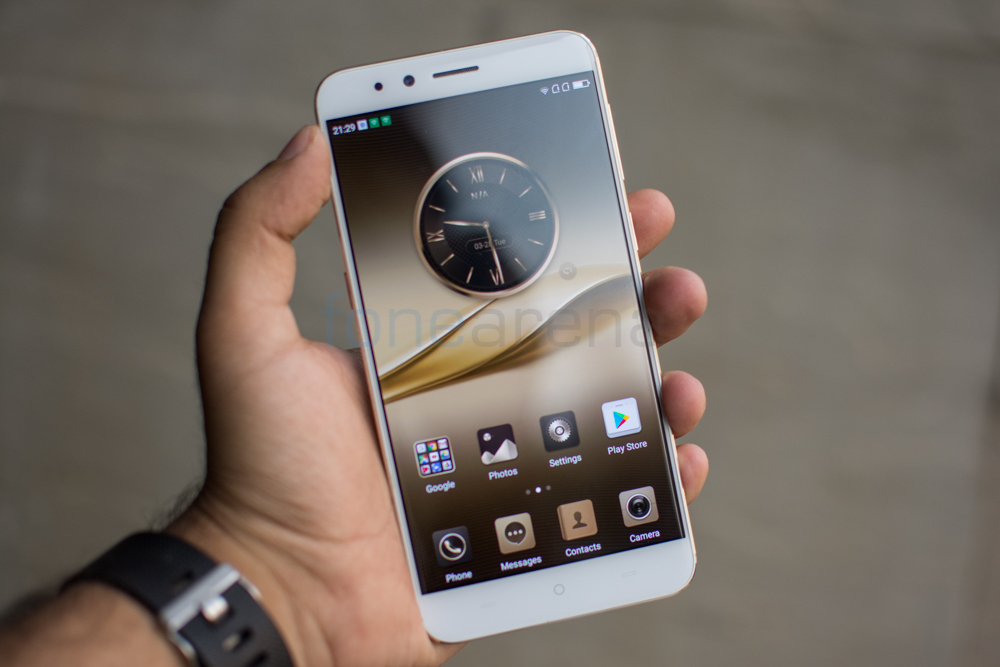
Our brief time with the phone has us fairly impressed by how far the company has come. Gone are the cheap plastics and tacky software interfaces. The phone feels well-built, solid and has internals to match. Then again, it isn’t just hardware that Micromax is competing against. The bigger challenge here is to overcome the years of brand positioning that have made Micromax squarely an entry-level phone player, a market that is increasingly being eaten into by the Chinese competition. The Micromax Dual 5 is priced at Rs. 24,999 and we’ll have our full review out for you very soon.
